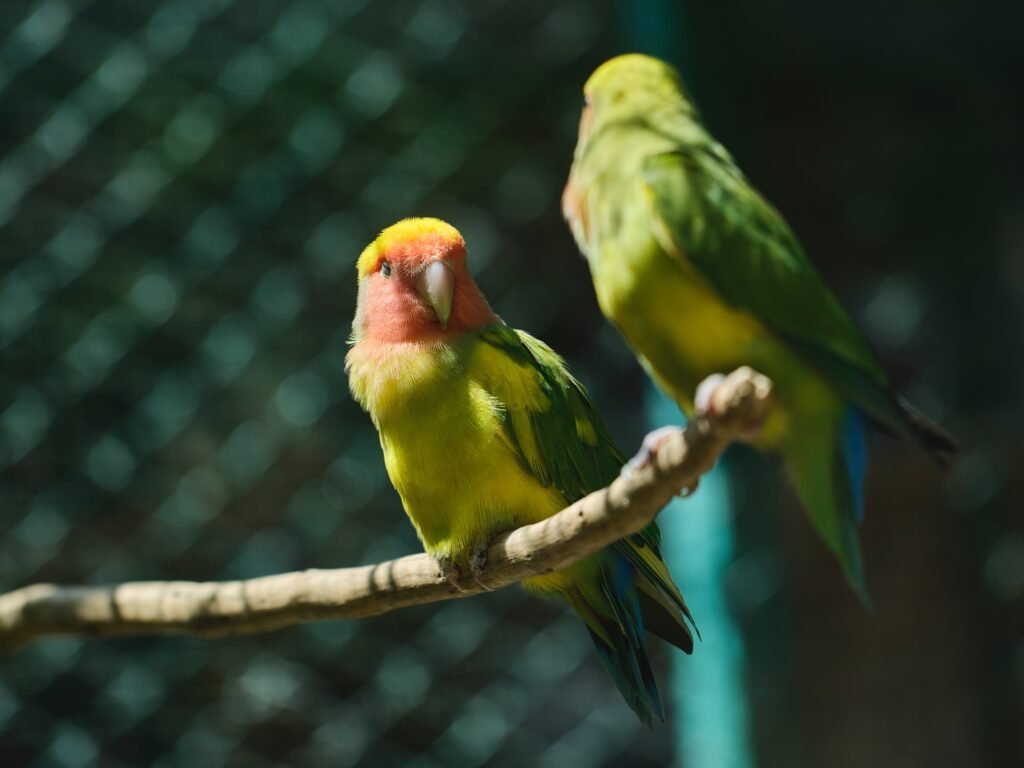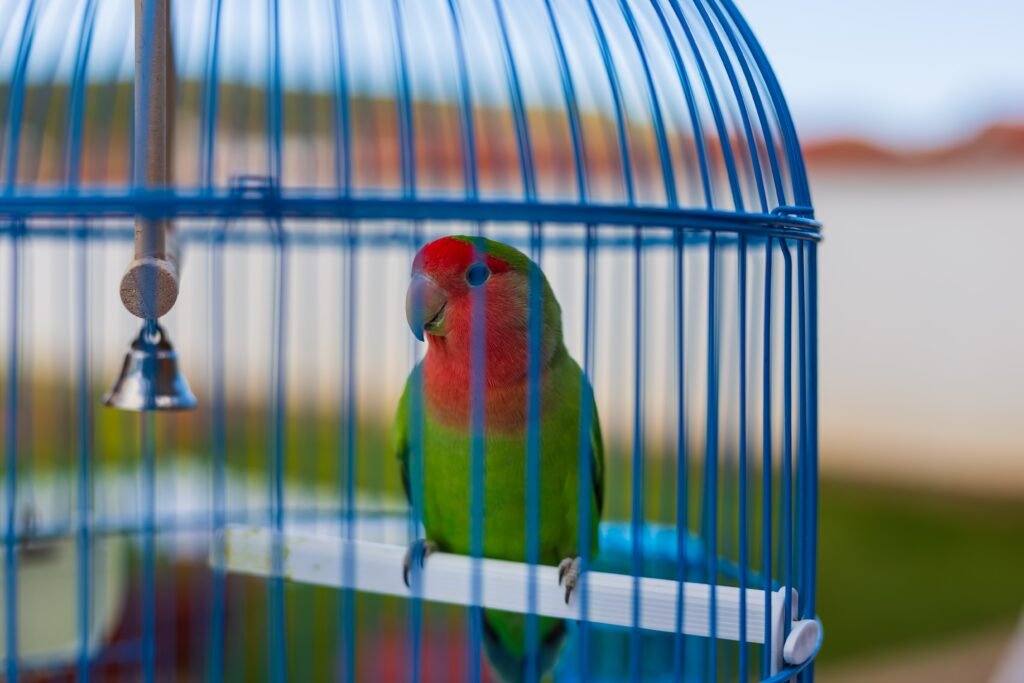
1. Pellets
Pellets are an excellent addition to a lovebird’s diet as they provide a balanced blend of essential nutrients. These small, bite-sized pellets are specifically formulated to meet the dietary needs of lovebirds and can be found in many pet stores. Look for pellets that are specifically labeled for lovebirds, as they contain the appropriate balance of proteins, vitamins, and minerals. Incorporating pellets into your lovebird’s diet ensures that they receive the necessary nutrients for optimal health.
In addition to being a convenient source of nutrition, pellets also promote better overall health for your lovebird. They help prevent nutrient deficiencies and promote proper growth and development. Pellets should make up about 30-40% of your lovebird’s daily food intake, ensuring that they have a well-rounded diet.
To introduce pellets to your lovebird, start by mixing a small amount with their regular seed mix. Gradually increase the ratio of pellets to seeds over time until your lovebird is consuming mostly pellets. Monitor your bird’s reaction and adjust the amount of pellets accordingly.
2. Fresh Fruits
Fruits are a tasty and nutritious addition to your lovebird’s diet. They are a great source of vitamins, minerals, and antioxidants. When offering fruits to your lovebird, ensure that they are fresh, ripe, and free from any pesticides or chemicals. Introduce new fruits gradually and observe your bird’s reaction to ensure they tolerate them well.
Some fruits that are safe for lovebirds to consume include:
- Apples: Remove the seeds and core, and slice the apple into small, bite-sized pieces. Apples are a good source of vitamin C and fiber.
- Berries: Blueberries, strawberries, and raspberries are all safe options for lovebirds. These fruits are rich in antioxidants and can boost your bird’s immune system.
- Grapes: Cut grapes into smaller pieces to avoid choking hazards. Grapes provide hydration and are a good source of vitamins C and K.
- Melons: Watermelon, cantaloupe, and honeydew can be given in small quantities. These fruits are hydrating and contain essential vitamins and minerals.
Remember to rinse the fruits thoroughly and remove any seeds or pits before feeding them to your lovebird. Incorporating a variety of fresh fruits into your lovebird’s diet provides them with essential nutrients and adds flavor and texture to their meals.
3. Fresh Vegetables
Vegetables are another important component of a lovebird’s diet. They provide essential nutrients, fiber, and hydration. When offering vegetables to your lovebird, ensure they are fresh and free from any pesticides or chemicals. Wash the vegetables thoroughly before serving them to your lovebird.
Some vegetables that are safe for lovebirds include:
- Leafy Greens: Spinach, kale, and Swiss chard are all excellent choices. These greens are rich in vitamins A, C, and K, as well as fiber.
- Carrots: Grate or finely chop carrots to make them easier for your lovebird to consume. Carrots are a great source of beta-carotene and promote good eyesight.
- Peppers: Red, green, and yellow bell peppers can be sliced into small pieces. Peppers provide vitamin C and antioxidants.
- Broccoli: Cut into small florets, ensuring they are not too big for your lovebird to handle. Broccoli is packed with vitamins and minerals, including vitamin C and calcium.
Introduce new vegetables gradually and monitor your bird’s response to prevent any digestive issues. Incorporating a variety of vegetables into your lovebird’s diet ensures they receive a range of nutrients for optimal health.
4. Cooked Foods
Lovebirds can also enjoy some cooked foods, which can add variety to their diet. It’s important to note that cooked foods should only make up a small portion of your lovebird’s diet and should not replace the main source of nutrition. When offering cooked foods to your lovebird, ensure that they are free from any seasoning or added salt.
Some safe cooked foods for lovebirds include:
- Brown rice: Cooked brown rice provides carbohydrates and fiber. It can be mixed with vegetables or pellets for added nutritional value.
- Hard-boiled eggs: A good source of protein, ensure the egg is thoroughly cooked and cooled before providing it to your lovebird. Eggs can be mashed or chopped into small pieces for easy consumption.
- Pasta: Cooked pasta can be offered occasionally as a treat. It is important to choose plain pasta without any sauces or seasonings.
Cooked foods should be served in moderation and should not make up a significant portion of your lovebird’s diet. They can be used as an occasional treat or to add variety to their meals.
5. Treats and Snacks
Treats can be offered occasionally to lovebirds as a special reward or for training purposes. However, it’s essential to choose treats that are safe and healthy. When offering treats to your lovebird, ensure that they do not compromise the nutritional balance of their diet and are given in moderation.
Some suitable options include:
- Millet spray: Lovebirds love the taste and texture of millet spray, which can be used as a reward during training sessions. It provides mental stimulation and can help prevent boredom.
- Nutritional treats: Look for treats specifically formulated for lovebirds, as they often contain a blend of seeds, fruits, and vegetables. These treats can be a fun way to provide additional nutrients and variety to your lovebird’s diet.
Remember to offer treats sparingly and monitor your bird’s overall intake. Overfeeding treats can lead to obesity and other health issues. Treats should not exceed 10% of your lovebird’s daily food intake.
Conclusion
In conclusion, while seeds are a staple for lovebirds, it’s important to provide them with a diverse and balanced diet. Incorporating pellets, fresh fruits, vegetables, cooked foods, and occasional treats can ensure that your lovebird receives the necessary nutrients to thrive. Remember to introduce new foods gradually and monitor your bird’s reaction. By offering a variety of foods, you can keep your lovebird healthy, happy, and satisfied.
FAQ
Q: Can lovebirds eat pellets?
A: Yes, pellets are an excellent addition to a lovebird’s diet as they provide a balanced blend of essential nutrients. They should make up about 30-40% of your lovebird’s daily food intake.
Q: What fruits are safe for lovebirds to eat?
A: Lovebirds can safely consume fruits such as apples (seeds and core removed), berries (blueberries, strawberries, raspberries), grapes (cut into smaller pieces), and melons (watermelon, cantaloupe, honeydew in small quantities). Remember to rinse the fruits thoroughly and remove any seeds or pits.
Q: What vegetables can lovebirds eat?
A: Lovebirds can eat vegetables such as leafy greens (spinach, kale, Swiss chard), carrots (grated or finely chopped), peppers (red, green, yellow, sliced into small pieces), and broccoli (cut into small florets). Wash the vegetables thoroughly before serving them.
Q: Can lovebirds eat cooked foods?
A: Lovebirds can enjoy some cooked foods as a small portion of their diet. Safe options include cooked brown rice (mixed with vegetables or pellets), hard-boiled eggs (thoroughly cooked and cooled, mashed or chopped), and plain cooked pasta (without sauces or seasonings). Cooked foods should not replace the main source of nutrition and should be served in moderation.



